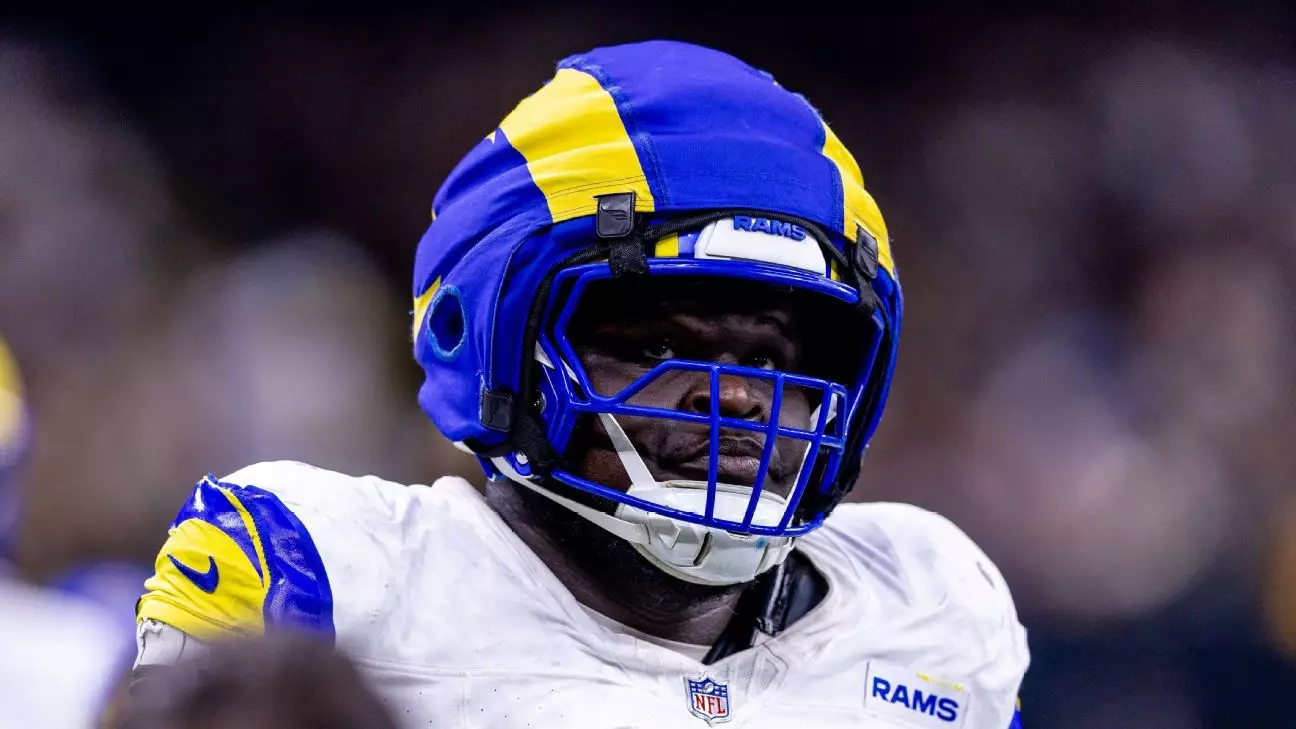The National Football League (NFL) has recently reported its lowest number of concussions recorded since the tracking of such data commenced in 2015. According to the league, there were 182 concussions occurring during both practices and games throughout the preseason and regular season, marking a notable 17% decrease compared to the previous year, which had recorded 219 concussions. This positive trend prompts a closer examination of the various factors contributing to this significant reduction, as well as the ongoing challenges that lie ahead for the league.
The decline in concussions is especially striking when positioned within a broader context of historical data. The NFL’s five-year average, excluding the unusual circumstances of the COVID-19 pandemic, is approximately 211.4 concussions. With this latest figure sitting significantly below that average, one might argue that the implementations made over the last few seasons are beginning to take effect. Dr. Allen Sills, the NFL’s chief medical officer, expressed cautious optimism, emphasizing that while the reduction is noteworthy, it represents only a portion of the league’s ongoing commitment to player safety.
A substantial drop in concussions during kickoffs, where the concussion rate fell by 43% due to rule changes, also highlights the impact of systematic adjustments made within the game. However, interestingly, the total number of concussions sustained during kickoffs remained unchanged from the previous season. This paradox underscores the complexity of injury prevention in football, where changes can yield mixed results depending on the specific dynamics of the play.
One of the critical elements attributed to this drop in concussion numbers is the upgraded quality of helmets, with Sills revealing that about 35% of players transitioned to higher-rated helmets in 2024. This is a significant increase from historical averages, which typically fall within the 14% to 17% range. Enhanced helmet design is often touted as a proactive measure to buffer the impact on players‘ heads, thereby reducing the likelihood of concussions. Additional safety measures, such as the mandatory usage of Guardian Caps during practices, have also emerged as pivotal factors in enhancing player safety.
Despite these positive strides, it is vital to recognize that while some helmets performed sufficiently well to exempt players from wearing Guardian Caps, the adoption of this innovative protective gear during regular-season games was low, with only around 20 players choosing to wear them. This minimal participation rate complicates the endeavor to analyze the effectiveness of such measures in actual game settings.
While the NFL’s findings on the reduction of concussions are heartening, it is essential to maintain awareness of the ongoing risks associated with player safety. For instance, the league’s overarching emphasis on redefining tackling rules—such as the prohibition of hip-drop tackles—has led to a significant number of fines and warning letters, evidencing a rough transition in enforcing new regulations. The challenge here lies not only in changing player behavior but also in ensuring that game officials can accurately identify infractions in real-time.
Moreover, new data points introduced by the NFL suggest that plays characterized by helmet impact involving players traveling at speeds exceeding 15 miles per hour drastically increase the risk of concussions. This troubling revelation signals that while strides are being made in concussion prevention, certain aspects of gameplay continue to pose significant dangers.
Looking Ahead: Strategies for Safety and Longevity
As the NFL moves forward, it must prioritize the continual improvement of safety protocols while remaining vigilant against emerging risks. The current progress should fuel innovations not only in helmet safety but also in tackling techniques, coaching strategies, and educational programs aimed at players at all levels. Engaging in ongoing research and collaboration with medical experts and player representatives will be crucial to fostering an environment where the sport can thrive without compromising the health of its athletes.
While the decrease in concussions within the NFL is an encouraging sign of progress, it is merely a stepping stone. A commitment to evolving safety measures and rigorous enforcement of rules is essential to continue reducing injuries across the sport. The journey toward a safer NFL is far from complete, and it will require a concerted effort from all stakeholders involved—players, coaches, the league, and medical professionals—to truly transform the game and safeguard its future players.


Napsat komentář